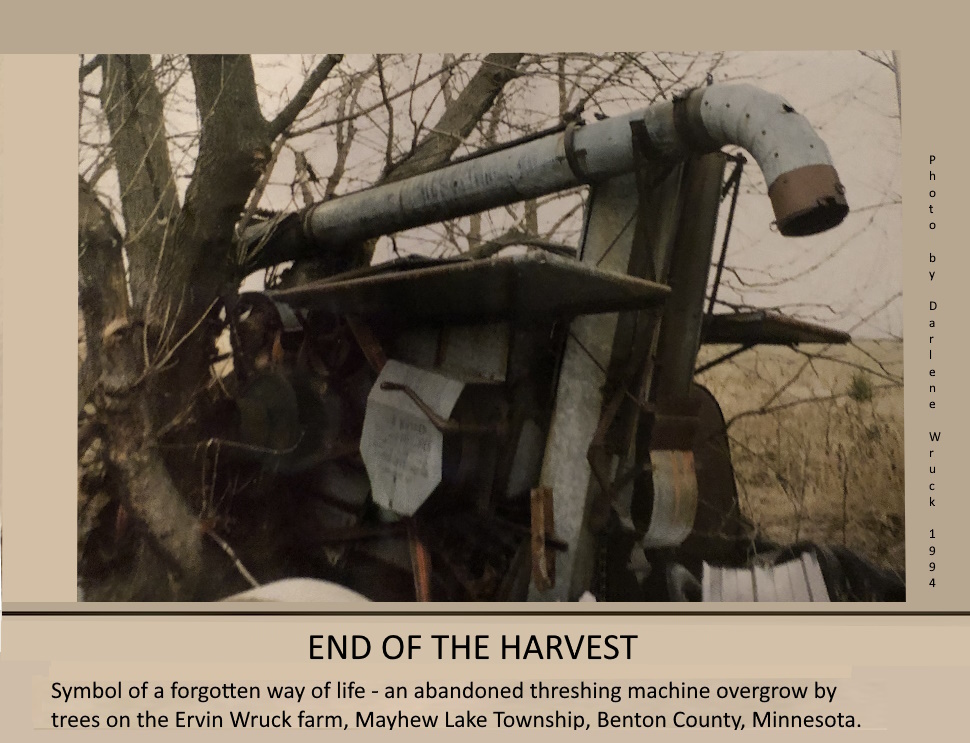
Over a period of 10 years, from 1943 to 1952, ways of running a farm in central Minnesota were turned upside down.
In the 1940s and early 1950s farming in central Minnesota was done with basic machines, such as corn binders, dump rakes, grain binders, and thrashing machines. Horse drawn wagons and hay mowers still common.
By the mid-1950s, gas-powered engines, with advanced implements, planted, tilled, and harvested a farm’s bounty. Expensive machines, which saved farm labor, replaced reliable, time-tested, implements that were paid for long ago.
The existing machines were now obsolete and no longer useful, with the arrival of more mechanized tools, such as swathers, combines, hay balers, and field choppers.
Horse collars and bridles lay collecting dust and infested by endless spider webs in dilapidated sheds.
The odd part of this shift, the machinery of old, while still in perfect working order, was abandoned in the back woodlot or removed for scrap.
Shocks of grain and corn that once blanketed the fields during late summer and early fall vanished in Burleene Township, Todd County, Minnesota, thought never to be seen again.
This copy is unedited by a human. Accuracy is unknow. Reader should verify the information in this post in independent sources.
The rural scene in central Minnesota, which had been around for decades, suffered a fate much like the surrounds of Pompeii, buried in history.
As might be predicted, the newer mechanized way of farming not only replaced the old way, but also shattered the humanity of honest toil, human labor, and the value of animal power, as the basis for a sustainable livelihood.
In the end, this change did not have a happy ending, as by the end of the 1950s, the small family farm was destined for failure.
The economics of small family farms was no match for greedy bankers and machinery companies back east in Minneapolis and Moline.
Then, in recent years, with the arrival of the Amish in central Minnesota, legacy farm ways and life regained new traction. The old ways now co-exist with modern farming.
